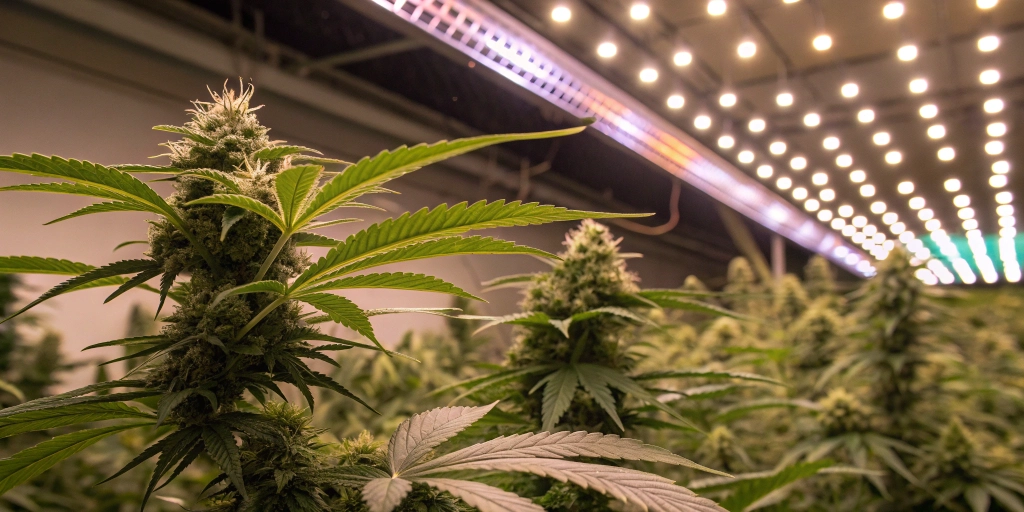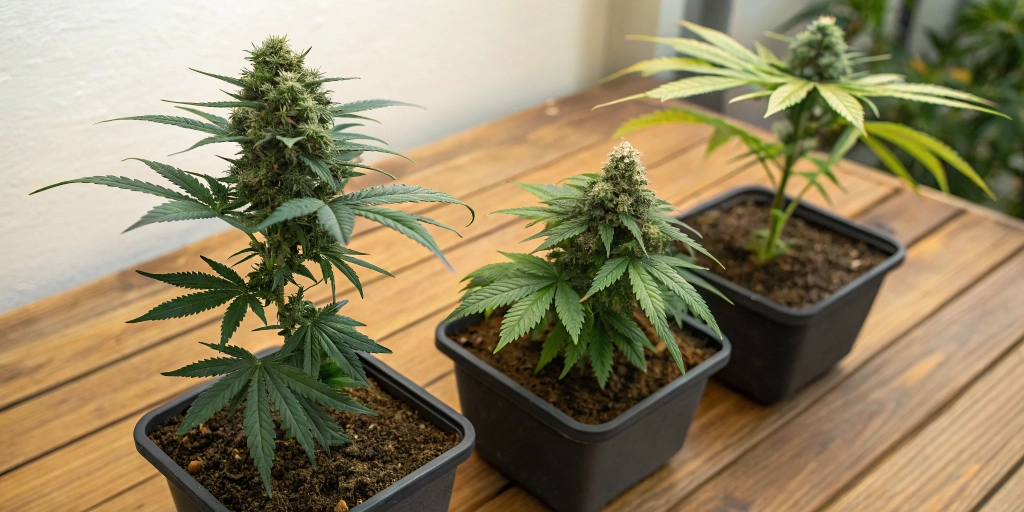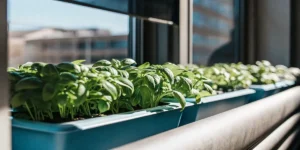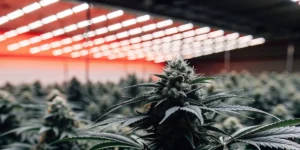Typical Growth Timeline
Germination Phase
Germination marks the beginning of a cannabis plant’s journey. In this stage, a seed absorbs moisture and cracks open. A tiny root emerges and pushes down into the soil. Next, the sprout breaks the soil’s surface and unfurls its first pair of leaves. This change can take anywhere from two to seven days under ideal warmth and humidity. Seed quality and moisture levels influence how fast this stage unfolds.
Growers often treat germination as a test of seed vitality. They place seeds between damp paper towels or directly in starter plugs. Consistent warmth between 20°C and 25°C speeds root development. If seeds stay too dry or cool, they may stall or fail. By keeping conditions steady and checking daily, you can guide sprouts toward healthy roots. This focus sets the stage for strong vegetative growth.
Vegetative Stage
Once seedlings show true leaves, they enter the vegetative stage. During this phase, plants focus on climbing size rather than flowering. Growers often run an 18/6 light schedule to promote leafy growth. Cannabis can double or triple in height over several weeks. Most growers allow six to eight weeks here before switching to bloom mode. Healthy roots and foliage during this time ensure a robust harvest.
In the vegetative stage, nutrient needs rise. Growers add balanced nitrogen-rich fertilizers to support leaf and stem growth. Regular pruning and training help maintain even canopies. This control improves light penetration and air flow. As stems thicken and nodes develop, growers prepare to shift lighting and feeding to stimulate the flower stage. Proper care now rewards you with vigorous bud sites later.
Flowering Duration
The flowering phase begins when plants receive a 12/12 light cycle. This signals cannabis to start bud production. Depending on the strain, flowering usually lasts between six and ten weeks. Indica-dominant plants often wrap up closer to six to eight weeks. Sativas may need eight to ten weeks or more. During this time, flowers swell and trichomes develop sticky resin glands.
Growers watch pistils change color and buds fill out. Consistent temperature and humidity help prevent mold or nutrient issues. They may tweak phosphorus and potassium levels to boost bloom health. As flowering peaks, buds gain density and aroma. This period represents the bulk of growth progression. Planning around each strain’s specific flowering window ensures you harvest at peak potency.
Strain-Specific Variations
Fast-flowering Varieties
Some strains finish flowering in as little as six weeks. Breeders create these varieties by crossing fast-acting genetics. They often show Indica traits like compact growth and dense buds. Growers who need quick turnarounds choose fast-flowering options. This speed suits small spaces or commercial grows where rapid cycles boost output.
Fast-flowering plants tend to sacrifice some yield for speed. Yet they perform well under controlled indoor conditions. Lower stretch reduces training needs and keeps canopy height manageable. In fact, you can harvest multiple crops in a season when you use rapid strains. For many home gardeners, this balance of speed and quality makes these varieties appealing.
Late-flowering Strains
On the opposite end, late-flowering varieties need up to ten or twelve weeks of bloom. These strains often carry strong sativa genetics that stretch and grow tall. They develop airy, elongated buds with potent effects. Outdoor cultivators who enjoy a late-season harvest choose these strains for unique flavors and long-lasting highs. While not a late bloomer, the Special Queen Auto strain is a great alternative for growers seeking quick results with sativa influence and reliable outdoor performance.
To manage height, growers may employ low-stress training or screen-of-green methods. This evens out canopy and supports heavy colas. Late bloomers demand patience but reward you with distinct terpene profiles. If space isn’t tight and you can protect plants from end-of-season weather, these strains shine. Their drawn-out bloom period suits those seeking special flavors.
Auto-flower Differences
Auto-flowering strains start bloom by age, not light schedule. Breeders introduced genetics from Cannabis ruderalis to trigger flowering around three weeks after sprout. Growers appreciate their simplicity and short overall cycle. From seed to harvest, autos often finish in eight to ten weeks total. This approach frees you from light-cycle shifts and complex timers.
Auto-flowers stay compact and adapt well to small indoor tents or outdoor containers. They need light for up to eighteen hours daily but tolerate some interruption. Auto-flowers yield less than photo-period varieties, yet they deliver quick results. For first-time growers or guerrilla gardens, auto-flower types offer a hassle-free route from seed to bud.

Environmental Impacts
Light Schedules
Photoperiod strains rely on light timing to signal growth phases. During vegetative growth, 18 to 24 hours of light each day boost leaf production. When you switch to 12 hours on and 12 off, plants enter bloom. Growers often use timers to maintain strict schedules. A sudden light leak during dark hours can stress plants and trigger hermaphroditism.
Meanwhile, auto-flowers ignore light shifts and bloom by internal clock. They thrive under consistent eighteen- to twenty-hour light running. Outdoors, light quality changes with seasons, so timing differs by latitude and cloud cover. Indoor cultivators mimic sunlight with LED or HID lamps. Quality light schedules optimize energy use and drive growth speed.
Temperature Control
Temperature plays a major part in plant metabolism. During daylight, most growers aim for 22°C to 28°C. This range maximizes photosynthesis and growth rates. At night, cooler temperatures around 18°C to 20°C help plants rest and conserve energy. Frequent hot or cold spikes create stress, reducing yields and resin quality.
In flowering, slightly lower night temperatures promote rich color and slow bud maturation. Yet drops below 15°C risk mold and leaf damage. Heaters, air conditioners and exhaust fans help maintain even climates. By tuning temperature controls, you ensure that plants perform at their peak from the seedling stage right through harvest readiness.
Nutrient Regimens
Cannabis needs a balanced diet of macronutrients and micronutrients. During the vegetative stage, high nitrogen levels support leaf and stem development. When bloom arrives, growers adjust nutrients to favor phosphorus and potassium. This shift drives flower production and resin formation. Many follow feeding charts to prevent nutrient burn or deficiency.
Organic soil mixes and compost teas add beneficial microbes that help roots absorb nutrients. Hydroponic systems use water-soluble nutrients and precise pH control for rapid uptake. If pH drifts outside 5.8 to 6.5 in soil or hydro systems, plants struggle. Frequent monitoring and calibration keep nutrient regimens on track. Healthy roots ensure robust growth and full harvests.
Accelerating Growth
CO₂ Enrichment
Boosting CO₂ levels in a sealed grow space can accelerate photosynthesis. Indoor growers often aim for 1,000 to 1,200 ppm during lights-on hours. In this enriched environment, plants convert light into energy more efficiently. That yields faster vegetative growth and larger flowers. Yet growers must also raise light intensity and maintain ideal temperature and humidity to match higher CO₂.
Proper ventilation systems help introduce and remove CO₂ safely. Too much carbon dioxide without fresh air exchange can harm both plants and people. Meanwhile, monitoring devices ensure you hit target levels without waste. When used correctly, CO₂ enrichment cuts days off growth cycles and enhances overall yield.
Training Techniques
Plant training shapes cannabis growth to maximize light exposure and airflow. Low-stress training bends and ties branches horizontally, opening canopy and boosting bud sites. Screen-of-green uses a net to spread branches evenly. High-stress techniques like topping cut the main stem to redistribute energy into multiple colas.
Training early in the vegetative stage sets up plants for better flowering performance. You control plant height and avoid hot spots where lights scorch leaves. Properly trained plants show uniform growth and provide easier access for pruning and pest checks. This hands-on method can shave weeks off the timeline to harvest.
Supplementary Lighting
Adding side or under-canopy lights fills in shaded areas. Strip LEDs or compact fluorescent bulbs placed among lower branches drive bud growth throughout the canopy. Even exposure ensures that all sites develop equally. Without supplemental lighting, lower buds tend to stay small and airy.
Supplementary lighting also comes into play during shorter winter days outdoors. Small solar-powered LEDs inside protective tents can extend day length. Indoor growers pair these lights with main fixtures to boost intensity. In both cases, evenly distributed light accelerates growth and increases usable yield.
Harvest Readiness Signs
Trichome Color
Inspecting trichomes under a jeweler’s loupe reveals maturity. Clear trichomes show not enough resin has formed. Milky white trichomes indicate peak cannabinoid levels. When around twenty to thirty percent turn amber, THC begins to convert to CBN, creating a more relaxed effect. Harvest timing here balances potency and effect.
Many growers plan to harvest when most trichomes appear cloudy, with a few amber ones sprinkled in. This timing maximizes psychoactive compounds while retaining flavor and aroma. Checking daily during late flowering helps you catch the perfect window. The right trichome color tells you when to cut stems and hang buds for drying.
Pistil Changes
Pistils start white and stand straight out from the buds. As flowering progresses, these hair-like stigmas darken to orange, red or brown. When around seventy percent of pistils change color, plants reach maturity. Growers often use this gauge alongside trichome checks to confirm harvest readiness.
Pistil color change offers a quick visual cue without magnification tools. However, genetics influence pistil speed and color intensity. Some strains hold white pistils longer, so relying on this alone can mislead. Combining pistil and trichome inspections gives you confidence that buds reached your desired potency and flavor profile.
Leaf Yellowing
As plants near the end of flowering, they naturally draw nutrients from older leaves. This causes yellowing and curling in lower foliage. While nutrient deficiencies earlier signal problems, late-stage yellow leaves show plants redirect energy into bud development. This process happens over one to two weeks before harvest.
Growers resist the urge to feed heavy nitrogen during this phase. Instead, they allow nutrient fade and flush with plain water to clear build-up. This gives cleaner smoke and treats resistant strains sensitive to minerals. Watching leaf color gives an extra clue that your crop approaches final ripeness.

FAQs about cannabis how long from seed to harvest
Can I harvest earlier safely?
Some growers try early harvest to speed up turnaround. Cutting too soon lowers yield and potency. You miss peak resin production and flavor. If you harvest before most trichomes turn cloudy, buds stay airy and underdeveloped. For a safe early cut, look for at least fifty percent cloudy trichomes and some amber ones. This balance gives you decent effects but risks a lighter yield.
How do I check trichomes?
You need a jeweler’s loupe or small microscope to see trichomes clearly. Simply cut a small bud and inspect under magnification during dark hours or under cool light. Rotate the lens slowly to view angles and judge color. Clean lenses before each check and hold steady for an accurate read. Checking trichomes daily during the last two weeks helps you catch the right harvest window.
Does container size matter?
Container size impacts root growth and overall plant health. Small pots restrict roots and stunt growth. Most indoor growers start in one- to three-gallon containers for seedlings, then transfer to five- to seven-gallon pots. Outdoors, gardeners use ten- to fifteen-gallon pots or plant directly in the ground. Adequate space lets roots branch freely and access water and nutrients more evenly, supporting faster growth and denser buds.





